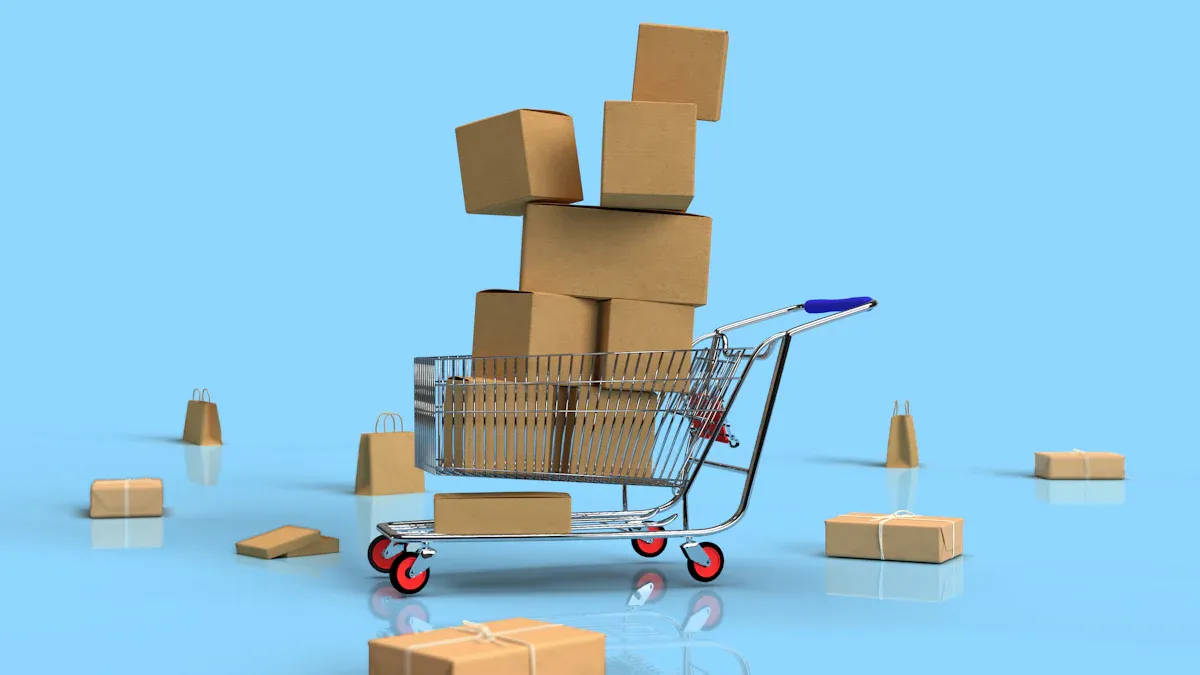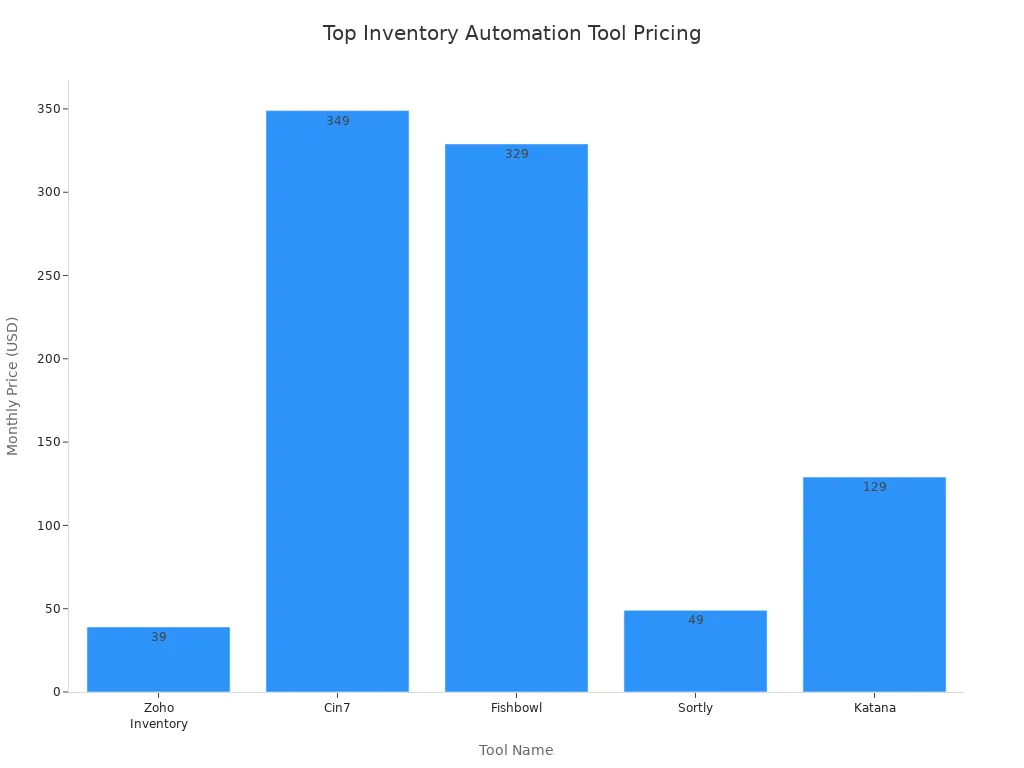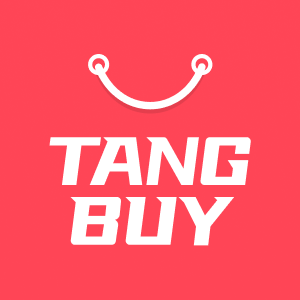Automate Your Dropshipping Empire: Top Tools for 2025 Efficiency & Growth

You want your Dropshipping Empire to grow quicker in 2025. Automation is now needed. More than 80% of shop leaders plan to use AI-driven tools to grow, so you must keep up. When you automate your business, you save time and make fewer mistakes. Your team does better work, and your customers get help faster. Here is what you get:
Faster customer service with chatbots and smart dashboards
Personalised email campaigns that help you sell more
Easy order management with ecommerce platform integration
Benefit | Impact |
|---|---|
Lower labour costs | Over 80% of tasks automated |
Fewer mistakes | Less refunds and chargebacks |
Quicker order handling | Under 1 minute per order |
Better customer experience | More people buy |
Your Dropshipping Empire can run from any place. Automation gives you freedom, flexibility, and more time to grow.
Key Takeaways
Automate your dropshipping jobs to save time. This helps you make fewer mistakes. It also helps your business grow faster.
Use AI-powered tools to handle orders and inventory. You can also manage customer service from one dashboard.
Automated email marketing helps you sell more. It sends personalised messages at the right times.
Connect apps and set rules for your workflow. This lets you automate daily jobs like order processing and stock updates.
Pick supplier automation tools to import products fast. These tools send orders to the best suppliers.
Keep your product listings and prices updated automatically. This stops you from selling items that are out of stock.
Use chatbots and helpdesk tools for quick customer support. They give friendly help all day and night.
Check your automation performance often. Stay involved and ready to avoid common problems.
Why Automate Your Dropshipping Empire

Efficiency Gains
You want your Dropshipping Empire to work smoothly. Automation helps you do this. You do not need to spend hours on boring jobs. Smart software can do these jobs for you. Here are some ways automation makes things easier:
Automated tools send orders to suppliers for you. You do not need to type in details.
Inventory management updates quickly. You do not have to worry about running out of stock.
Fulfilment becomes more accurate. You fix fewer mistakes.
You save money because you do not need to hire more staff.
You get extra time to grow your business.
Tip: Try AI-powered tools that link with platforms like Shopify. These tools handle payments and product listings. They also send tracking updates to customers. You can use one dashboard to manage everything, even if you have many shops.

Reducing Errors
Manual work can cause mistakes. You might type the wrong address or forget to update stock. Automation helps stop these errors. Automated systems use exact algorithms, not human memory. Order management software and inventory tools keep your data correct. You do not oversell or run out of stock. Real-time updates and automated messages keep everyone informed—suppliers, customers, and your team.
Automated dropshipping systems can lower stockouts by 30%. AI-driven forecasting can cut inventory mistakes by half. You see fewer wrong orders and faster inventory updates. This means you spend less and your customers have a better experience.
Scaling Operations
When your Dropshipping Empire gets bigger, you need better systems. Automation lets you handle more orders without more staff. You can manage many suppliers and shops from one place. Automated order routing sends each order to the best supplier. It checks stock and location. Real-time analytics show what works and what needs fixing.
Here is a quick look at how automation helps you grow:
Automation Aspect | What It Does | How It Helps You Grow |
|---|---|---|
Faster Processing | Handles big order volumes quickly | Supports more sales |
Error Reduction | Stops human mistakes | Builds trust with customers |
Resource Management | Sends orders to the best supplier | Saves time and money |
Scalability | Grows with your business, no extra staff needed | Makes expansion simple |
Real-Time Analytics | Shows live data on orders and stock | Helps you make smart choices |
Multi-Supplier Management | Syncs inventory with all suppliers | Keeps your supply chain smooth |
Automated Communication | Sends updates to everyone fast | Speeds up fulfilment |
You do not get tired from doing the same jobs again and again. Automation gives you time to plan and grow. Your Dropshipping Empire gets stronger and more flexible. You are ready for anything the market brings.
Email Marketing Automation

Email marketing automation helps you talk to customers at the right time. You can send messages that match what your customers like. This makes them want to buy from you more. Let’s see how email automation can help your shop grow.
Campaign Management
You want your emails to help your business. Automated campaigns send messages when customers do something. If someone leaves things in their cart, you can remind them. If a new customer joins, you can welcome them with a special deal.
Here are some top email marketing automation tools for 2025:
Tool | Best For | Key Features | Pros | Cons | Pricing Highlights |
|---|---|---|---|---|---|
Mailchimp | Beginners, small businesses | Welcome emails, templates, tracking | Free tier, easy to use | Basic automation, no Shopify | Free, paid from £5/month |
Recapture | Shopify, abandoned carts | Cart recovery, auto-stop emails | High recovery, easy setup | Focused on carts only | From £39/month |
Omnisend | Ecommerce, multi-channel | Email, SMS, browser notifications | Powerful, fair pricing | Limited templates | Free for 250 subs, paid from £16/month |
ActiveCampaign | Advanced automation | Workflows, messaging, autoresponders | Dynamic journeys | No major cons listed | Pricing not specified |
Constant Contact | Events, large lists | Event tools, integrations, deliverability | Good for events | Basic automation | From £20/month |
GetResponse | Big budgets, advanced users | A/B testing, landing pages, webinars | Feature-rich | No free tier, higher price | Free trial, paid only |
Pick a tool that suits your needs. Mailchimp is good for beginners. Omnisend is great if you want email and SMS together. Recapture helps you get back sales from abandoned carts. ActiveCampaign is best if you want advanced options.
Automated campaigns save time and help you sell more. They get more people to open your emails. Triggered emails, like cart reminders, can get open rates up to 64%. Normal campaigns often get only 35-40%. You get more sales because your emails arrive when customers are ready.
Tip: Set up automated flows for welcome emails, cart reminders, and follow-ups. Use templates to save time. Test your subject lines to find what works best.

Segmentation
Segmentation helps you send the right message to each person. You can split your list by age, location, or shopping habits. This makes your emails feel personal. Customers feel like you understand them.
Here are smart ways to segment your email list:
Group by location. Send swimsuits to people in warm places. Send jumpers to those in cold areas.
Split by age or gender. Offer student discounts or deals for seniors.
Track buying habits. Give VIP offers to people who buy often. Send discounts to those who spend less.
Watch engagement. Send re-engagement emails to people who haven’t opened your messages lately.
Use cart abandonment. Remind customers about items left in their carts with friendly messages.
Most email tools, like Klaviyo and Mailchimp, help you set up segments. You can collect data from your shop and use it to send targeted emails. This helps you get more clicks and sell more.
Note: Segmentation lets you make your emails personal. Customers are more likely to open and read messages that matter to them.
Multi-Channel Integration
Multi-channel integration means you can reach customers in more ways. You can use email, SMS, and browser notifications together. This keeps your brand in front of customers and helps you get back lost sales.
When you connect your email tool with your ecommerce platform, you can:
Track customer value and send special offers to big spenders.
Send SMS reminders for abandoned carts or order updates.
Use predictive analytics to send messages at the best time.
Set limits so you don’t send too many messages and annoy customers.
Multi-channel workflows help you keep customers coming back. Shops that use automated segmentation and cart recovery see up to 25% more recovered sales. You can also use dashboards to check your campaigns and make quick changes.
Strategy | Impact on Retention and Engagement |
|---|---|
Automated cart recovery | 25% more recovered sales |
Unified dashboard integration | Faster campaign changes |
Predictive analytics | Better timing, higher retention |
Lead nurturing and re-engagement | More sales from old leads |
Callout: Try using email and SMS together for your next campaign. You can reach customers wherever they are and keep your shop in their mind.
Setting up automated email flows is simple. Pick your tool, connect it to your shop, and choose your triggers. Use templates for common messages. Test your emails and watch your results. You’ll see more opens, clicks, and sales.
Task Automation
Automating your daily jobs can change your shop. You finish more work and make fewer mistakes. You also get more time to grow your business. Let’s see how workflow automation, app integration, and daily tools help your shop run better.

Workflow Automation
You want to stop doing the same jobs again and again. Tools like Zapier, Make (Integromat), and Shopify Flow help you set up smart rules. These tools let you make rules that start actions. For example, when a customer buys something, the system sends the order to your supplier. It updates your inventory and sends a tracking email. You do not need to do anything.
Here is a table with popular automation tools and what they do:
Tool Name | Key Features | Why Choose It / Benefits |
|---|---|---|
Zapier | Connects 2000+ apps, multi-step workflows, custom triggers and actions | No coding needed, scalable, boosts productivity |
Shopify Flow | Visual workflow builder, trigger-based automation, deep Shopify integration | Streamlines operations, flexible, improves efficiency |
Oberlo | Product import, real-time syncing, order tracking | Saves time, seamless Shopify integration |
Inventory Source | Automated data syncing, supplier integrations, order fulfilment automation | Increases efficiency, supports multiple suppliers |
You can automate order processing and inventory updates. You can also send messages to customers. This means you spend less time doing things by hand. You get more time to grow your shop.
Tip: Start with easy workflows like sending order confirmations. You can also update stock levels. Add more steps when you feel ready.
App Integration
Connecting your apps helps everything work together. Zapier and Shopify Flow let you link your shop to email, spreadsheets, and chatbots. You can set up rules so when something happens in one app, another app does something too.
Automate order management and customer groups.
Add new customers to your email list.
Get alerts when stock is low.
These links help your team do more work without extra staff. You get faster order handling and better customer service.
Note: Most links need no coding. You just pick your apps and set your rules. The system does the rest.

Daily Operations
You can automate almost every daily job in dropshipping. Here is how:
Sync inventory on all sales channels.
Send orders to the best supplier by stock and location.
Send order alerts and tracking updates to customers.
Process big orders fast.
Change prices automatically to stay ahead.
Automation tools like Flxpoint and Inventory Source help your shop run all day. You avoid running out of stock and make fewer mistakes. Customers stay happy. Start with syncing inventory. Then add order routing and talking to suppliers. Watch your workflows and change them for better results.
Callout: Automation gives you more time to plan and grow. You can make your business bigger without feeling stressed.
Supplier Sourcing Automation
If you automate supplier sourcing, you save lots of time. You can launch products faster and make fewer mistakes. Your work becomes easier and smoother. Let’s see how the best tools can help you manage suppliers.

Product Importing
You want to add new products fast. Supplier automation tools help you do this with just a few clicks. Tools like Importify let you bring in many products at once. You do not need to copy details by hand. The system uses AI to rewrite titles and descriptions. This makes your listings look different and helps with SEO. You can also change prices and switch currencies automatically. This means you can launch new products in just a few hours.
Supplier automation tools link to your suppliers using APIs, CSV, or XML files. They check the data and match it to your shop’s categories. They make sure everything is correct. You do not have to fix mistakes yourself. Some shops have gone from taking a week to launch products to just one day by using these tools.
Tip: Always check if your supplier tool works with the data formats you use. This helps you avoid problems and keeps your listings right.
Order Routing
Order routing is hard if you do it by hand. Automation makes it easy. When a customer buys something, the system sends the order to the right supplier. If you use more than one supplier, it splits the order for you. You do not need to send emails or files yourself.
Here are some good ways to automate order routing:
Make rules to send orders to the best supplier by stock and location.
Sync tracking numbers from suppliers back to your shop for better order tracking.
Use systems that work with all your vendors.
Watch orders and stock in real time to spot problems early.
Make sure your system can handle returns and refunds easily.
You can use ERP software or automation platforms to link your shop to suppliers. This keeps orders moving quickly and cuts down on mistakes.
Real-Time Updates
Real-time updates help you avoid running out of stock or selling too much. Automation tools show you the latest stock levels on all your sales channels. You see what is in stock right now. The system updates inventory every few minutes. This stops you from selling items you do not have.
Stock levels sync across your website, shops, and suppliers.
The system sends alerts when stock is low.
AI can tell you when to reorder based on past sales.
You can lock stock as soon as a customer orders, so you do not sell the same item twice.
Tracking supplier performance helps you avoid bad partners.
Note: Test your inventory sync often. This helps you find mistakes before they reach your customers.
Here’s a quick look at top supplier automation tools for 2025:
Tool | Key Features & Strengths | Integration & Reliability Highlights |
|---|---|---|
Zapro | End-to-end procurement, predictive analytics | Strong ERP integrations, unified platform |
SynerTrade | 35+ modules, strategic sourcing, risk compliance | Seamless integration with ERP, finance, analytics |
SAP Ariba | Global supplier network, spend management, risk and contract management | Trusted for global integration, comprehensive spend control |
GEP SMART | Cloud-native, real-time dashboards, category planning and analytics | Scalable, strong integration features |
Pick a tool that matches your business size and needs. Good integration means less stress and more time to grow your shop.

Product Management Automation
It can be hard to manage lots of products. If you have hundreds or thousands, it feels like too much. Automation makes this job much easier. You do not have to check stock by hand. You can update your listings and change prices quickly. Let’s see how automation helps your shop work better.
Inventory Sync
You do not want to sell things that are not in stock. Automated inventory sync keeps your stock levels right everywhere you sell. Tools like Expandly, Dynamic Inventory, and Ordoro link your shop to suppliers and marketplaces. They update your stock right away, so you always know what you have.
Real-time updates stop you from selling too much.
Low stock alerts tell you when to order more.
You can see all your stock in one place, even with many suppliers.
Platforms like Oberlo, DSers, and Spocket also sync your stock for you. They warn you if you are running low and let you pause sales until you restock. This keeps your customers happy and your shop running well.
Tip: Set up alerts for low stock. This helps you act quickly and not miss sales.
Here is a quick look at some top inventory automation tools:
Tool Name | Pricing Range | Key Features Supporting Inventory Sync, Listing Updates, and Pricing Automation |
|---|---|---|
Zoho Inventory | Multichannel selling, automatic price updates, multi-warehouse support | |
Cin7 | £279/month for 3 users | Real-time stock visibility, order lifecycle automation, personalised pricing |
Fishbowl | £263/month for 2 users | Advanced inventory tracking, warehouse management, ecommerce integration |
Sortly | Free for 1 user, £39/month standard | Visual inventory, real-time tracking, notifications |
Katana | £102/month for 1 user | Visual planning, real-time inventory tracking, easy order management |

Listing Updates
It takes a long time to update product listings by hand. Automation lets you add new products and update details with just a few clicks. Tools like Expandly, Ordoro, and Katana help you manage listings on Shopify, Amazon, eBay, and more.
Add new products fast by matching supplier data to your shop.
Rule-based delisting removes out-of-stock items, so customers do not buy what you do not have.
Automatic updates keep product details and images up to date.
Automated listing updates save you time and stop mistakes. You can manage a big catalogue without feeling stressed. Your customers always see the right products, so they trust your shop and come back.
Note: Use rules to remove products with low stock. This helps you avoid selling things you do not have and keeps your shop tidy.

Pricing Automation
Prices can change a lot. You need to keep up without spending hours checking prices. Pricing automation tools do this for you. They watch supplier prices, market trends, and your own stock.
Aspect | Explanation |
|---|---|
Real-Time Price Adjustments | Changes prices right away based on supplier costs, demand, and stock. |
Automated Tools | Watches supplier prices and stock, changes prices using your rules. |
Dynamic Pricing Strategies | Helps you make more money by changing prices for overstock or popular items. |
Alerts and Customisation | Sends alerts for big price changes and lets you set your own rules. |
Dynamic pricing helps you react quickly to market changes.
You can stop price wars and keep your profits safe.
Automated tools like Flxpoint and Cin7 let you set rules for price changes, so you stay in control.
Callout: Try making automatic pricing rules for your bestsellers. You will save time and keep your prices good.
Setting up product management automation is easy. Pick a tool that fits your shop. Connect your sales channels and suppliers. Set your rules for stock, listings, and prices. Test your workflows and watch your shop run itself. You will have more time to grow your business.

Customer Service Automation
You want every customer to feel special and helped when they visit your shop. Customer service automation lets you do this without working all day and night. You can answer questions fast and fix problems quickly. This keeps your customers happy. Let’s see how chatbots, helpdesk tools, and automatic messages can make your support better.
Chatbots
Chatbots work all the time, even at night. They answer questions right away, no matter where your customers live. You do not have to worry about different time zones or holidays. Chatbots help with FAQs, order tracking, and simple requests. This means customers get help straight away.
Saleswhale follows up with leads and keeps people interested.
Chatbots make waiting times shorter and help customers feel happy. They can answer questions about orders, refunds, and shipping. Your team can then focus on harder problems. Chatbots also speak many languages, so you can help customers from anywhere.
Tip: Let chatbots answer easy questions. Your team can help with harder ones. This keeps your support quick and friendly.
Helpdesk Integration
Helpdesk tools like Gorgias, Zendesk, and Tidio put all your support in one place. You can see emails, chats, and social media messages together. This makes it easy to track problems and fix them fast.
Aspect | Description | Impact/Result |
|---|---|---|
Unified Customer and Order Data | Puts customer profiles, order history, billing, and shipping details in one ticket. | No need to switch screens, faster support. |
Automation Features | Fills in tickets, adds tags, and sets rules for what is important. | Less manual work, smoother jobs. |
Resolution Time Reduction | Quick access and automation mean less time per ticket. | |
Customer Satisfaction | Support feels personal with all customer info ready. | Customers are 15-25% happier. |
Agent Productivity | Agents can handle more tickets without hiring more staff. | Up to 40% more tickets managed. |
Multi-Store and Real-Time Sync | Works for many shops and updates right away. | Easier to manage, always up to date. |
Performance Analytics | Checks how fast you solve problems and how happy customers are. | Helps you get better over time. |
Helpdesk integration helps you fix problems faster and keeps customers happy. You also get reports to see how your team is doing and where to improve.

Automated Notifications
Automated notifications keep your customers updated. You can send order updates, tracking links, and return steps without extra work. Customers always know what is happening with their orders, which builds trust.
Send order updates by email or SMS to stop customers worrying.
Give steps for payment problems automatically.
Share return policy links and refund instructions.
Use confirmation emails right after a customer buys something.
Regular updates help customers feel sure about their orders. Automated notifications save you time and make your messages clear and on time.
Note: Train your team and use FAQs to answer more questions quickly. Good communication makes customers want to buy again and trust your shop.
It is important to balance automation with real help. Use chatbots and notifications for speed, but always let customers talk to a real person if they need to. This mix gives your shop the best support and keeps customers coming back.

Optimising Your Automation Stack
Tool Integration
You want your automation tools to work well together. When you link them, your shop works faster and makes fewer mistakes. Here are ways to build a smooth workflow:
Sync inventory, pricing, and fulfilment in real time on all sales channels. This stops you from selling too much and keeps your data right.
Use rules and triggers to automate choices. For example, send orders to the supplier with the most stock or lowest price.
Make sure your tools connect safely. Use secure APIs with encryption and error checks to protect your data.
Set up workflow rules for syncing inventory, routing orders, tracking shipments, and handling returns. This keeps your jobs simple and easy to manage.
Put all your data in one dashboard. You can see products, orders, and prices together.
Use plugins and apps from platforms like Shopify or WooCommerce. These make linking tools easy.
Always test your automation rules in a safe place before using them live. This helps you find problems early.
Tip: Start with the most important links, like syncing inventory and orders. Add more as your shop gets bigger.
Monitoring Performance
You need to check if your automation works well. Real-time data helps you spot problems and fix them quickly. Tools like Flxpoint show inventory, orders, and shipments as they happen. This means you do not sell items that are out of stock and keep customers happy.
KPI/Feature | What It Shows | Why It Matters |
|---|---|---|
Supplier Performance | How fast and reliable your suppliers are | Fix slow or unreliable suppliers |
Order Fulfilment Rates | How many orders ship on time | Keep customers satisfied |
Profitability Insights | Which products make the most profit | Focus on best-sellers |
Inventory Levels | Stock across all channels | Avoid stockouts and overstock |
Custom Reports | Data on what you choose | Improve your shop with real numbers |
Real-Time Data Sync | Live updates on orders and stock | Stop errors before they happen |
Set goals for these KPIs. Check your reports often. Use dashboards to watch trends and spot problems. When you see an issue, change your workflows. This keeps your shop running well and helps you grow.

Avoiding Pitfalls
Automation saves time, but it can cause problems if you do not pay attention. Here are common mistakes and how to avoid them:
Delayed Shipping: Slow delivery upsets customers. Work with local suppliers and always tell customers how long shipping takes.
Hands-Off Trap: Automation does not mean you can ignore your shop. Keep working on marketing, customer service, and your website.
Peak Season Panic: Busy times can break your system. Prepare early, talk to suppliers, and get your support team ready.
Returns Trouble: Hard return processes lose customers. Make your return policy clear and easy to use.
Supplier Risks: Relying on one supplier is risky. Use more than one and check their reliability.
Marketing Neglect: Do not stop promoting your shop. Use ads, content, and social media to keep customers coming.
Note: Automation works best when you stay involved. Keep checking your systems, talk to your team, and always look for ways to improve.
Automation changes your Dropshipping Empire. It makes things quicker and simpler. Shops that do well in 2025 pick special markets. They work with good suppliers. They use AI-powered tools for many jobs. These tools help with product importing and customer support. Begin by automating one part, like order fulfilment or email marketing. Test some of the suggested tools. Plan what you will do next. Soon, your business will grow and change. It will stand out in a busy market. Dropshipping has a bright future. Use automation and watch your empire do well.

FAQ
What is dropshipping automation?
Automation means you use software to handle jobs like order processing, stock updates, and customer emails. You save time and avoid mistakes. Your shop runs smoother, and you can focus on growing your business.
Do I need coding skills to set up automation tools?
No, you do not need coding skills. Most automation tools have simple dashboards and drag-and-drop features. You just follow the steps and set your rules. Anyone can get started.
Can automation help me avoid selling out-of-stock products?
Yes! Automation tools sync your inventory in real time. You always know what you have. The system can pause sales for items that run out, so you never oversell.
Will automation make my customer service less personal?
Not if you set it up well. Chatbots answer simple questions quickly. You can let customers talk to a real person for harder problems. This keeps your support friendly and fast.
How much does dropshipping automation cost?
Prices vary. Some tools offer free plans for small shops. Others charge monthly fees. You can start with free versions and upgrade as your shop grows. Check each tool’s pricing before you choose.
Can I use automation with any ecommerce platform?
Most automation tools work with popular platforms like Shopify, WooCommerce, and BigCommerce. Always check if your chosen tool supports your shop before you start.
What should I automate first in my dropshipping business?
Start with order processing and inventory sync. These jobs take lots of time and cause mistakes. Once you see results, add email marketing and customer service automation.
Tip: Begin small. Test each tool before you automate more jobs.

TangBuy: A Smarter Way to Dropship in 2025
If you're looking to stay competitive with dropshipping in 2025, speed and trend-awareness are key. TangBuy helps you stay ahead with real-time product trends, fast fulfilment, and factory-direct sourcing. With over 1 million ready-to-ship items, 24-hour order processing, and seamless Shopify integration, TangBuy makes it easier to test, scale, and succeed in today's fast-moving eCommerce landscape.
See Also
A Complete Guide To Starting Dropshipping In 2025
Essential Advice For eBay Dropshipping Success In 2025
Best Dropshipping Applications Every Shopify Store Needs Today

